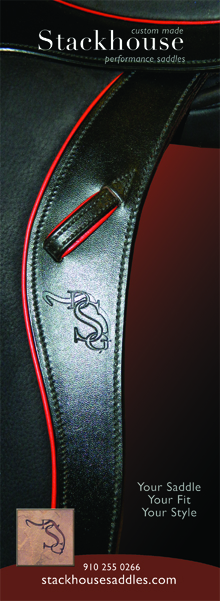Search the Site
Video # 21: This is Briana and Henry doing their novice level dressage test! (Current freebie!)
Briana, you have a nice trot at the beginning here, although the rhythm is just a touch quick, which shows a bit of tension in his body. The figures that you do between 1:20 and 2:00 help him to relax his back and find a steadier rhythm with more relaxation in his topline.
Compare the trot at 1:55, where he shows more swing and elasticity in his steps, with the slightly stiffer and more rushed trot that you have when you go straight again at 2:25.
Lots of different circles and changes of direction really help you to bring him together. And when you have to go straight, I would keep him busy with lots of transitions and some leg yielding, so he doesn't throw his weight on his front end and run faster. If you are pushing him for that extra speed, you need to think a little slower. If he is just running forward on his own and through your aids, you need to keep him busy with constant half halts and downward transitions in your trot work to keep shifting his weight back over his hind legs.
As you enter the ring to do your test, his trot is very quick. Compare that to the trot you had at 1:55, which was the working trot rhythm that gives him more time to swing more through his back.
When showing bend through your turns, be careful that you don't turn his head too much to the inside. Focus on your horse's ribcage when asking for bend, not his neck. You over shot your right turn at B, and used too much inside rein to make the turn. But those turns settled him into a slightly more relaxed rhythm.
Stretch up and ride him a bit more up into the outside rein on your trot circle, and watch that he doesn't drop too low in front like he does at 6:16. The final quarter of that trot circle should be used to prepare for that canter transition. He hollowed going into the canter because at the time of the transition he did not have his hind legs up underneath him, and was not up into the connection.
His canter circle was nice, but he is a bit tight in his back. Watch that you don't overuse the inside rein. Once your horse answers your aid for inside flexion, soften that aid. And if he remains flexed to the inside, leave it soft. Don't physically hold the flexion - that just creates tension and resistance.
When you are able to ride him in a slight shoulder fore in the canter this direction you will probably find that the slight lateral tendency of his canter will go away, and he will be more balanced in his downward transitions.
The trot after his canter is a bit strung out. Use your corners and turns more to help elevate the front end. Remember to half halt before each corner or turn, and to increase the inside leg to outside rein connection through the turn. This will allow you to use each corner to improve his balance.
He is still strung out in the trot circle to the right, and again drops too low in front near the end of it. He is then not in the balance that will make for a smooth and balanced transition into the canter. Because of that transition into the canter, his right lead canter is strung out and unbalanced. But it starts to improve in the last quarter of your circle, and the downward transition to trot is much better this direction.
Your transition into walk starts off fairly well (although more preparation in the corner would have improved it further), but you threw away the connection as he completes it. It actually looks like you are doing a free walk at C, where it is supposed to be a medium walk. Which means that you can't really do a transition to free walk at M. Because this is a schooling show, this judge may not have marked you off too much for that, but at a recognized show you will ruin your score for the medium walk and the score for the free walk. And he's got such a great free walk that you don't want to be throwing those points away! You should not let the reins out in the free walk until after you have turned onto the diagonal line.
Start your transition back to medium walk a little earlier. He should be back in medium walk as your leg is passing K, not 10 strides later into the corner. He wasn't really on the aids in the walk as you asked for the trot, so that's why he "hopped" into it. If you had had him back into the medium walk by K, you could have used the corner to improve the connection in that medium walk to better prepare for the upcoming trot transition. Remember not to rush to ask for the trot after you turn down the center line. There is always room for one more half halt before you ask. The more you have him up into the connection, the more connected the transition will be.
Sit the trot before you ask for the halt. And wait for him to stop completely before you salute, keeping a little more feel on the reins if you feel he wants to step forward while you salute.
Overall, some very nice moments! Better preparation for all transitions, and more use of your corners, turns and circles to improve your connection will improve your scores.







0 Comments Posted Leave a comment